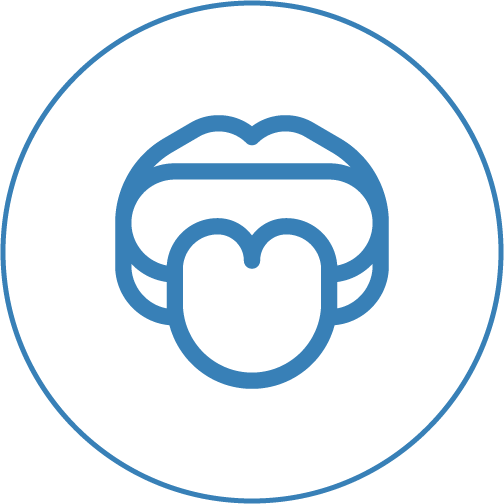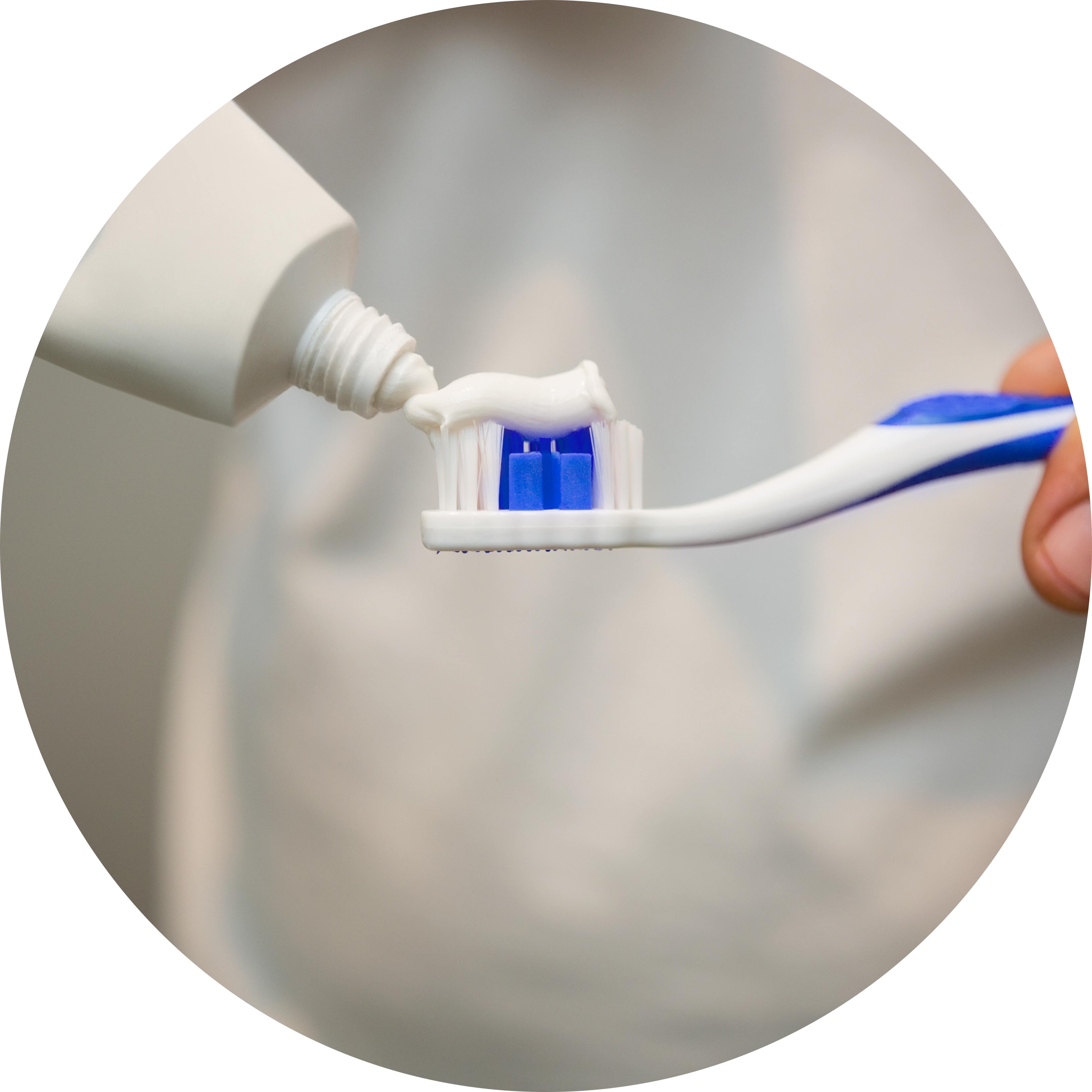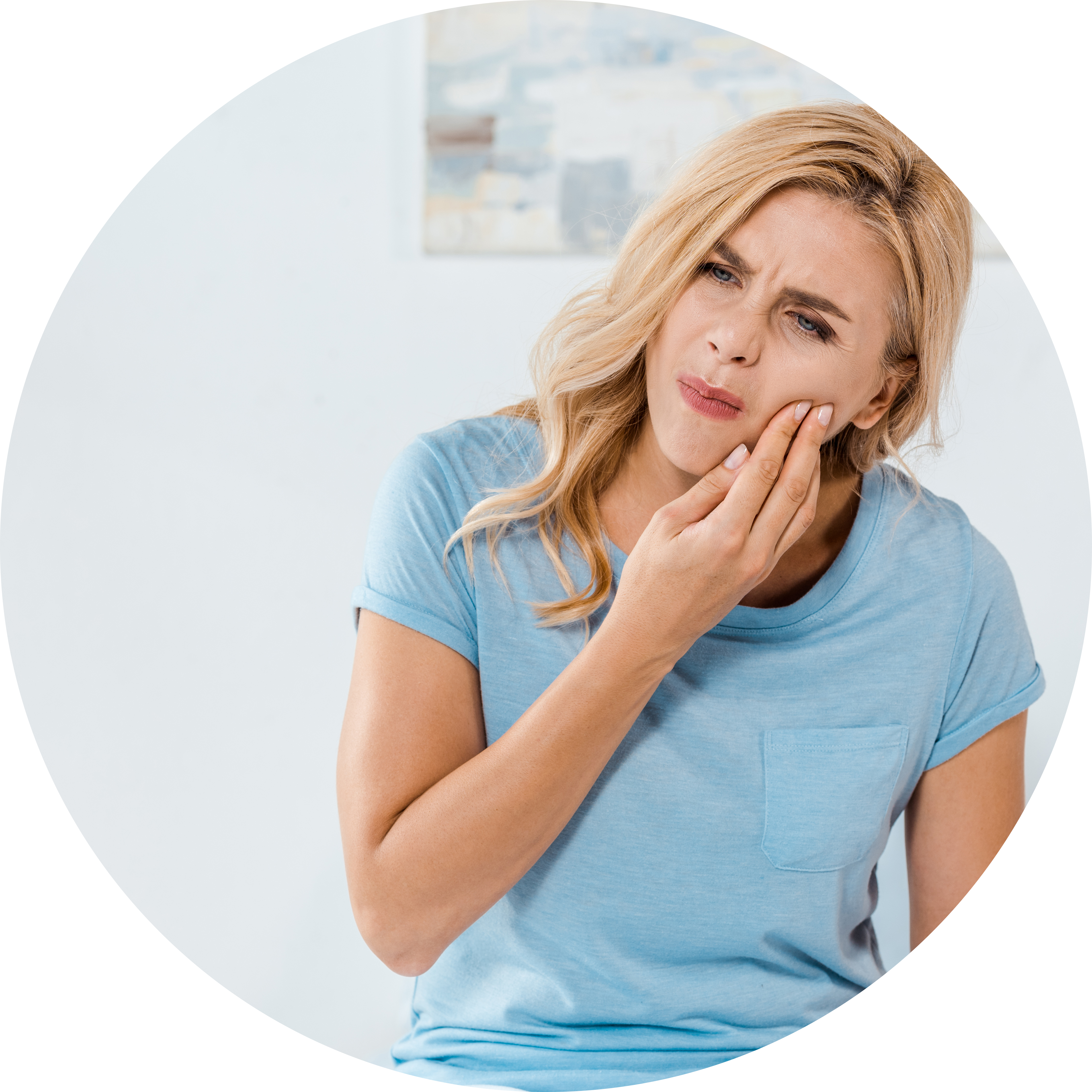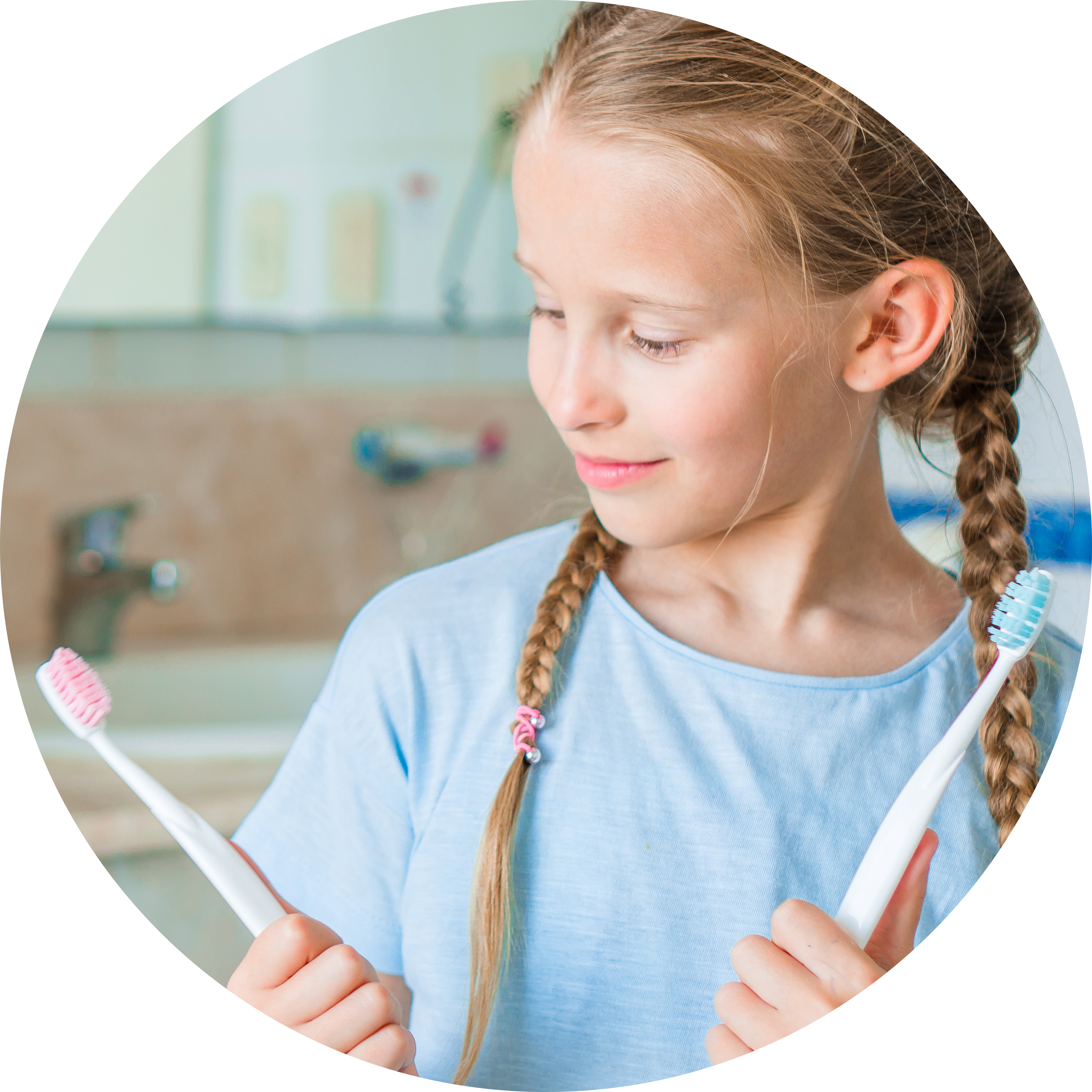
Discover the Way to Take Care of Your Smile
Did you know that folks in the Middle Ages would treat a toothache by kissing a donkey? It’s true! Fortunately, oral health has come a long way since then.
Your smile matters to you. That’s why you brush your teeth every day and visit your dentist for scheduled cleanings. But good oral hygiene involves much more than a white smile. In fact, your oral health is connected to your overall health.
If you’ve ever wondered about your teeth, you’re in the right place. At Blue Haven Dental, we want you to feel comfortable exploring your oral health. That’s why we’ve prepared the following guide, which covers plenty of topics, from oral hygiene tips to your mouth’s most important parts – and even how to get a hesitant kid to fall in love with brushing. Happy reading!
The Anatomy of Your Mouth
Your mouth is made up of hard-working parts that support each other and your overall health. How do your teeth, gums, and tongue work together? Learn about these parts below.
The Teeth
You know that teeth are responsible for biting and chewing food, as well as making your smile look great. But teeth are so much more important than you might realize. It’s important to maintain proper care of your teeth by brushing and flossing at least twice per day.
What Actually Is a Tooth?
Contrary to popular belief, teeth are not a type of bone. Sure, they are both pearly white and rich in calcium, but they have a few key structural differences.
Bones are able to heal when they break thanks to something called collagen. Teeth do not have collagen, but they do have plenty of tough layers making them stronger than bone.
The biological purpose of teeth is to break down food into smaller pieces to make it easier to swallow and digest – and each type of tooth contributes in a different way.

You have four types of teeth:

Incisors
Eight teeth at the front of your mouth – four top and four bottom – that are used for biting

Canines
Four teeth that surround the incisors that are used for tearing

Premolars
Eight larger teeth that surround canines. They are used for crushing

Molars
Twelve large outer teeth; used for grinding

The Individual Parts of A Tooth
Teeth are more complex than they look. A tooth can be divided into three parts: crown, root, and neck.
- The crown refers to the visible part of the tooth that sticks out of the gums
- The root refers to part of the tooth beneath the gums that holds the tooth in place
- The neck refers to the part of the tooth around the gum line that connects the crown and the root
Teeth also have three layers:
Enamel is the outer layer of your tooth. It protects the other layers. Enamel is the strongest substance in your body, but it is weak to acid created by bacteria. Thus, enamel should be protected by proper brushing and flossing.
Dentin is the layer behind enamel, and its job is to provide support between the outer and inner tooth. It is softer, and contains plenty of minerals.
Pulp is the centre of the tooth. It is soft, and it contains connective tissues and cells.
Benefits of Taking Proper Care Of Your Teeth

Fresh breath:
Brushing and flossing can eliminate bacteria that causes bad breath

Protect heart health:
Bacteria from your mouth can enter your bloodstream and increase your risk of heart attack or stroke

Protect from tooth decay:
Proper care will remove the food particles from your mouth, which would otherwise turn into harmful bacteria

And of course, you’ll keep your smile looking great
The Gums
A set of gums is essentially a seal around your mouth that is made up of mucous membrane and connective tissue. Their job is to hold your teeth in place and act as a shield for the neck and root of each tooth. As with teeth, gums need to be taken care of as part of your overall oral health plan.
Your gums can be divided into two sections: marginal and attached.
- Marginal gums are the thin layer closest to the neck of the tooth. It is softer and lighter in colour than the rest of the gums, and is usually between 1-2 mm.
- Attached gums are the bigger section of gums that surround the marginal gums.


Benefits Of Taking Proper Care Of Your Gums
- Keep your teeth in place: strong gums can stop teeth from coming loose and falling out
- Protect heart health: studies suggest that there is a link between gum disease and heart disease
- Prevent gingivitis: if your gums appear inflamed, you may have gingivitis
- Protect your memory: studies suggest that there is a link between gum disease and dementia
The Tongue
Your tongue is an important organ: it is responsible for taste, but it is also important for speaking and chewing food. This may surprise you, but your tongue health is just as important as the
rest of your oral health.

Parts of a tongue
Notable parts of the tongue include:
- Mucosa: this is a pink tissue that covers the tongue
- Papillae: textured bumps that cover the tongue, helping you eat and perceive
taste and temperature - Taste buds: small sensory organs within the papillae that enable you to perceive taste

Benefits of a Healthy Tongue
- Improved sense of taste
- Fresh breath
- Remove harmful bacteria
What is Saliva?
Saliva is a mix of water and substances that are important to your health. It helps you eat, fights bacteria, and protects the enamel on your teeth. It is produced when you chew, and it comes from salivary glands, which are located all over your mouth.
All Parts of Your Mouth Work Together
It’s important to take proper care of every part of your mouth, as each organ works together to keep your breath fresh, your smile shiny, and your mouth bacteria-free.
Choosing the Right Toothbrush
Visit a store’s oral care aisle, and you’ll see rows upon rows of colourful brushes that promise different things. How can you tell which one is right for you? Read below.
What to Look For
Plenty of brushes have specific claims or features, and you may find them helpful on an individual basis. We’ve listed the three most important features to look for.
Find the CDA Seal of Approval
The Canadian Dental Association tests oral health products to ensure that they deliver on their promises. Look for the CDA Seal of Approval on the package of your toothbrush. This will show that the benefits claimed on the package are valid.
Soft Bristles are Better than Hard Bristles
You might be tempted to try a toothbrush with hard bristles. After all, wouldn’t hard bristles brush harder and remove more dirt from your teeth? That’s not the case, according to the Canadian Dental Association. They recommend using a soft brush with rounded bristles, which will provide comfort and an effective cleaning.
Pick a Size That Works For You
The size of your brush should be correlated to the size of your mouth. Someone with a small mouth, like a child, would not benefit from using a large brush – it would be uncomfortable and hard to reach tight areas. Likewise, a small brush wouldn’t effectively clean a large mouth.


Common Toothbrush Questions
How Often Should I Change My Toothbrush?
You should change your toothbrush once every three months, or when the toothbrush becomes worn out or dirty – whichever happens first. Some brushes are designed to fade or lose their colour to indicate that it is time to replace them. It’s important to change your brush, since they tend to gather bacteria and germs over time.
Should I Get an Electric Toothbrush?
Electric toothbrushes have become a popular alternative to manual brushes in recent decades. Many believe that electric toothbrushes are more effective in cleaning teeth – and studies find this to be true. One 11-year study found that electric toothbrushes could help reduce gum disease and tooth retention better than manual brushes.
Should I Get a Bamboo Toothbrush?
Bamboo toothbrushes have become a popular, environmentally-friendly alternative to plastic toothbrushes. These are usually made with the same bristles, so they have no major bearing on your ability to clean your teeth. Some find the bamboo uncomfortable to hold – keep in mind that comfort can affect your ability to brush properly.
Choosing the right toothbrush can improve your oral health. What matters most, though, is how you brush. No matter what brush you choose, make sure you stick to a regular, thorough oral health routine.
Choosing the Right Toothpaste
Have you ever wondered why we don’t just brush our teeth with water? Toothpaste is the right material for the job thanks to the combination of ingredients it contains.
Each brand of toothpaste has its own ingredients, but you can typically expect the same things from each one:
- An abrasive, which gets rid of dirt and stains
- A foaming agent, which allows the toothpaste to spread and get in between teeth
- A tasting agent, which makes the toothpaste taste better

What to Look For
There are so many tubes of toothpaste on shelves, how do you know which one is right for you? Look for these traits:
Find the CDA Seal of Approval
The Canadian Dental Association tests oral health products to ensure that they deliver on their promises. Look for the CDA Seal of Approval on the package of your toothpaste. This will show that the benefits claimed on the package are valid.
Contains Fluoride
Fluoride is a mineral that is found in most toothpastes, and for good reason. It keeps enamel strong and fights against tooth decay. Check the package of your toothpaste to ensure that it contains fluoride.
Choosing a Whitening Toothpaste? Make Sure It’s Safe for Enamel
Some buyers turn to whitening toothpastes to brighten their smiles. The effectiveness of these products depends on the individual brand, but the best way to whiten teeth is to see a dentist for professional whitening. This will be a safer and more effective route.
If you do choose a whitening product, make sure that it does not wear down your enamel, as many whitening products tend to do this.

Other Questions You May Have
Can I Use Charcoal Toothpaste?
Charcoal toothpastes have become a trendy product in recent years. Some buyers prefer charcoal toothpaste, believing it offers a deeper clean than regular toothpaste.
However, most dentists agree that charcoal toothpaste’s drawbacks outweigh the benefits.
- It doesn’t actually whiten the full tooth – it only removes surface stains
- Charcoal is abrasive – and it tears down your enamel
- There isn’t enough data showing that charcoal toothpaste is worth using
- Meanwhile, existing studies show that charcoal toothpaste isn’t promising
Can I Make My Own Toothpaste?
Many people prefer to make their own toothpaste, rather than buy it from the store. There are plenty of simple recipes to do this, most of them involving baking soda as the key ingredient. Most dentists recommend that you buy CDA-approved toothpastes instead, since homemade toothpaste won’t contain fluoride and might damage your enamel.
Ask your dentist whether or not homemade toothpaste is right for you.


Can I Use Toothpaste on Braces or Invisalign?
Toothpaste is safe on braces, and you’ll likely want to brush more frequently when receiving orthodontic care.
You should not use toothpaste on Invisalign, however. Instead remove your liners to brush your actual teeth and rinse your liners with water at least once a day.
Can I Use Toothpaste on Dentures?
Brushing your dentures is important, but regular toothpaste is usually too abrasive. Consider using a denture paste or talk to your dentist about other options.
Does Whitening Toothpaste Really Work?
Whitening toothpastes can remove surface stains from your teeth. These come from things like coffee or wine. However, these whitening products don’t actually clean beneath the tooth’s surface and aren’t a long-term solution to achieving a whiter smile. These products also tend to damage your enamel.
Ultimately, a toothpaste product that is safe and contains fluoride is the best tool for your daily oral health routine, especially when combined with a good toothbrush and effective brushing habits.
Brushing Your Teeth Properly
The way you brush your teeth will affect how clean and healthy your teeth will become. The Canadian Dental Association offers an easy step-by-step guide to brushing – here’s what it says:
- Brushing should take at least two minutes
- Brush in a circular motion, going up-and-down whenever possible
- Brush gently, as brushing too hard can causing gums to recede
- Brush every side of the teeth, including the sides and back
- Try brushing in different patterns each time to make sure you don’t miss anything
- A proper oral health routine combines brushing with flossing each day, since flossing can reach areas that your toothbrush cannot
Common Oral Health Mistakes
Brushing Too Hard
You might think that brushing harder will lead to cleaner, whiter teeth. But dentists like Gene Romo, DDS, who is also a consumer advisor for the American Dental Association, agree that brushing too hard comes with risks. Aggressive brushing can wear down enamel and make your gums recede.
Instead, dentists suggest brushing gently for at least two minutes at a time.
Not Brushing for Long Enough
It’s recommended that you brush your teeth for two minutes, two times a day, but many still cut through the process. Research shows that two really is the magic number: a 2016 review from the Journal of Dental Research found that anything less than this can increase your risk of tooth decay and gum disease.


Not Flossing Because Of Blood
Have you ever found that your gums bleed when you floss? Many patients avoid flossing for this reason, but you should actually floss more if you see blood. Without flossing, gums become sensitive, causing them to bleed when they feel pressure. By flossing consistently, you’ll eliminate that sensitivity.
Skipping Dentist Appointments
It’s recommended that you visit the dentist at least once every six months. This is still the case even if you think your mouth is free of problems. After all, a dentist does more than fixing problems – they can reinforce good oral health habits too.
Getting Your Kids to Brush Properly
If your child makes a fuss about taking care of their teeth, you’re not alone! Plenty of parents have trouble getting their kids to brush and floss. Still, it’s important to get kids on board with brushing their teeth – after all, it helps to encourage good habits as early as possible.
Try these tips:
Make It Comfortable
Has your kid expressed fear when it comes time to brush? This may not be a behavioural issue. Instead, they might find the process painful or scary. Remind your kids to brush gently with a soft-bristled brush. You may choose to buy products designed for sensitive patients or choose a toothpaste with a taste that they enjoy.
Make It Fun
Teeth cleaning doesn’t have to be a chore. Encourage your child to brush with one of these fun ideas:
- Make a sticker chart, and reward your child for getting a set amount of stickers
- Find products with characters your child loves or recognizes
- If your kid wants to put the toothbrush down quickly, play their favourite song – two minutes will go by in a breeze


Spark Your Kids’ Curiosity
Does your kid ask a ton of questions? Are they always poking for information?
Some kids love learning, and you can use their curiosity to your advantage. By letting them explore the world of oral health, they might start to care more about their own teeth. If your child loves to read, consider getting them a book about teeth to spark their interest.
The Takeaway
In the above guide, you learned:
- Why it’s important to take care of your teeth, gums, and tongue
- How to choose the right toothbrush and toothpaste
- What brushing techniques are recommended by professionals
- How to get kids to brush

